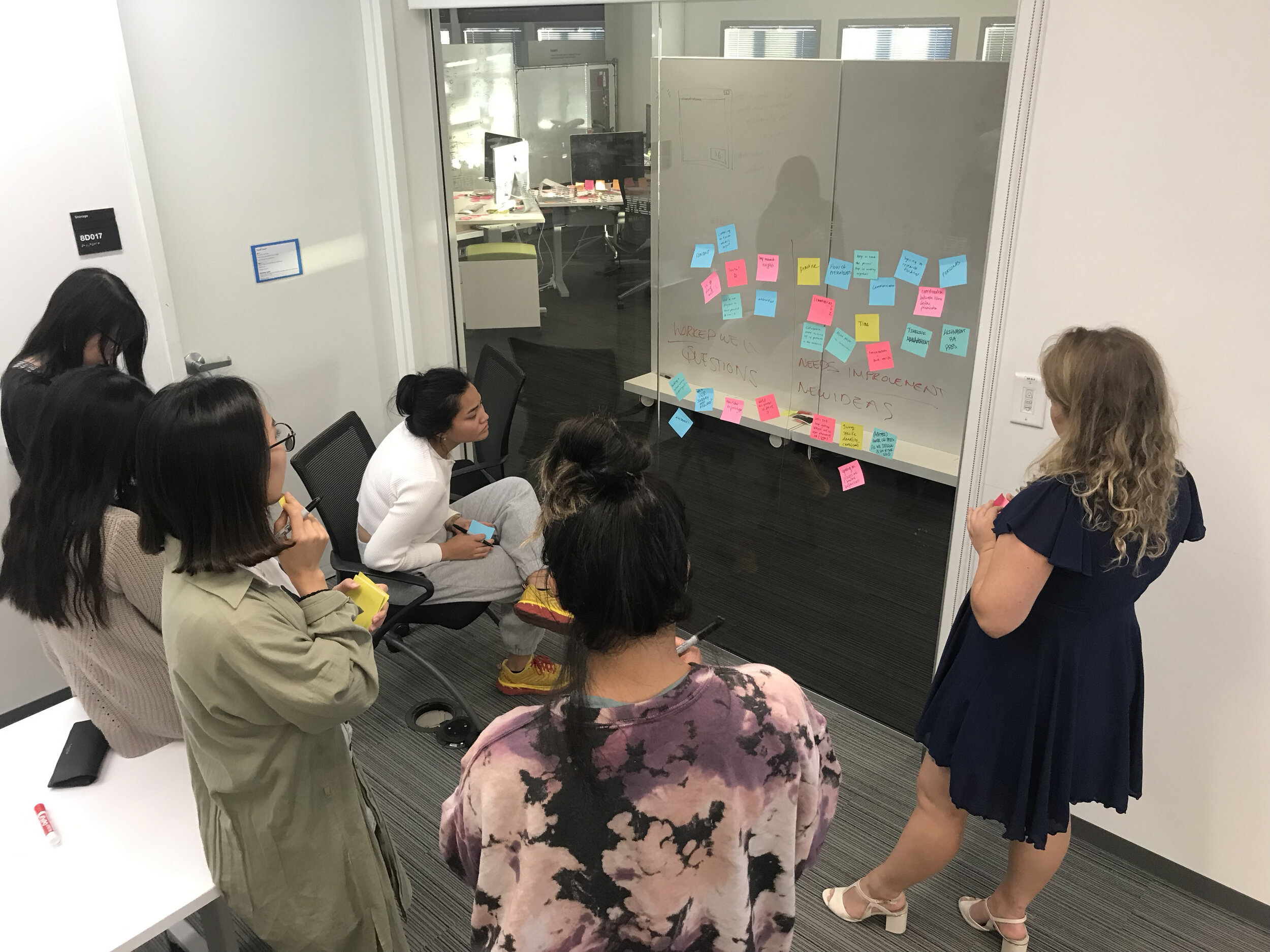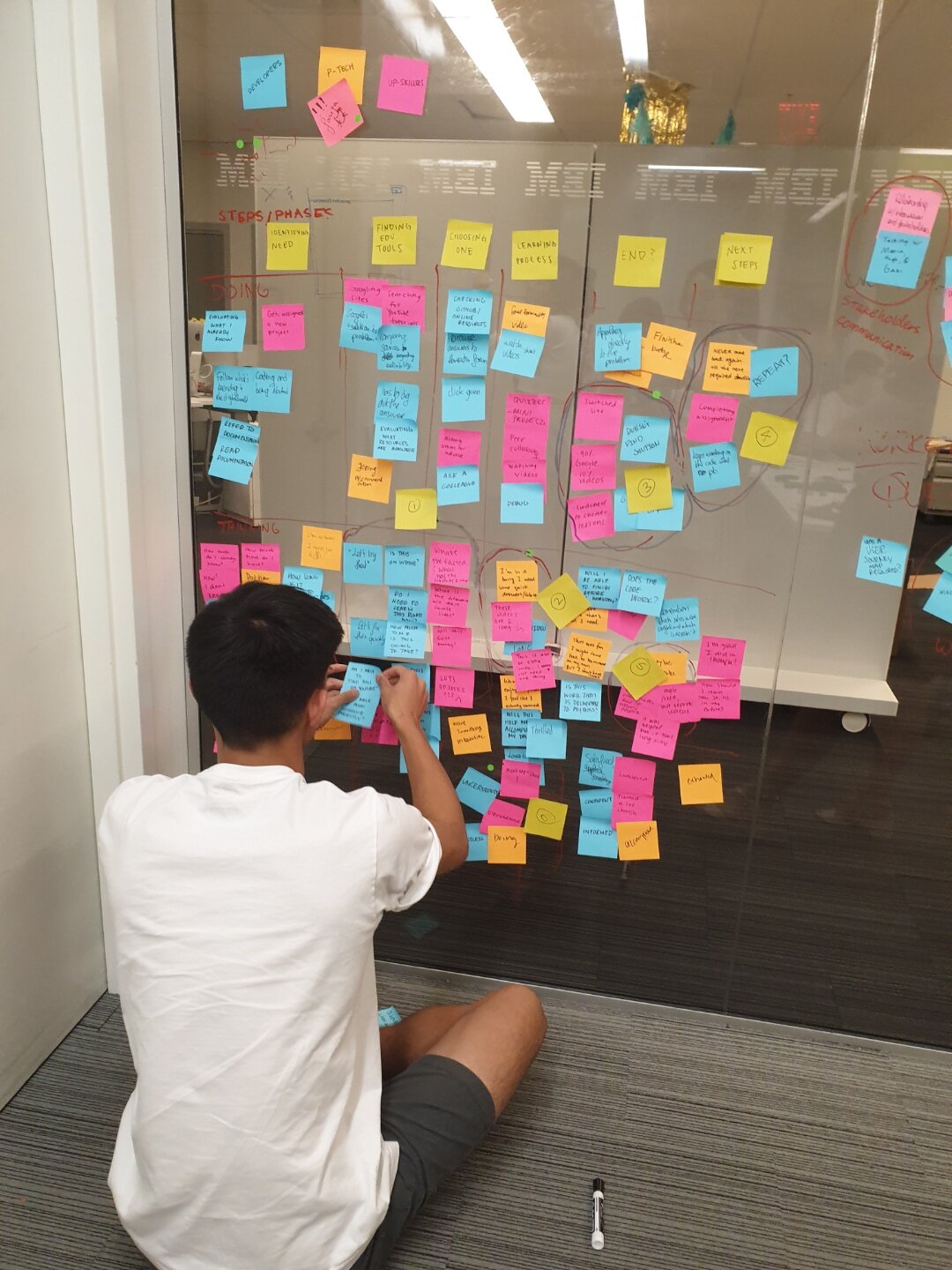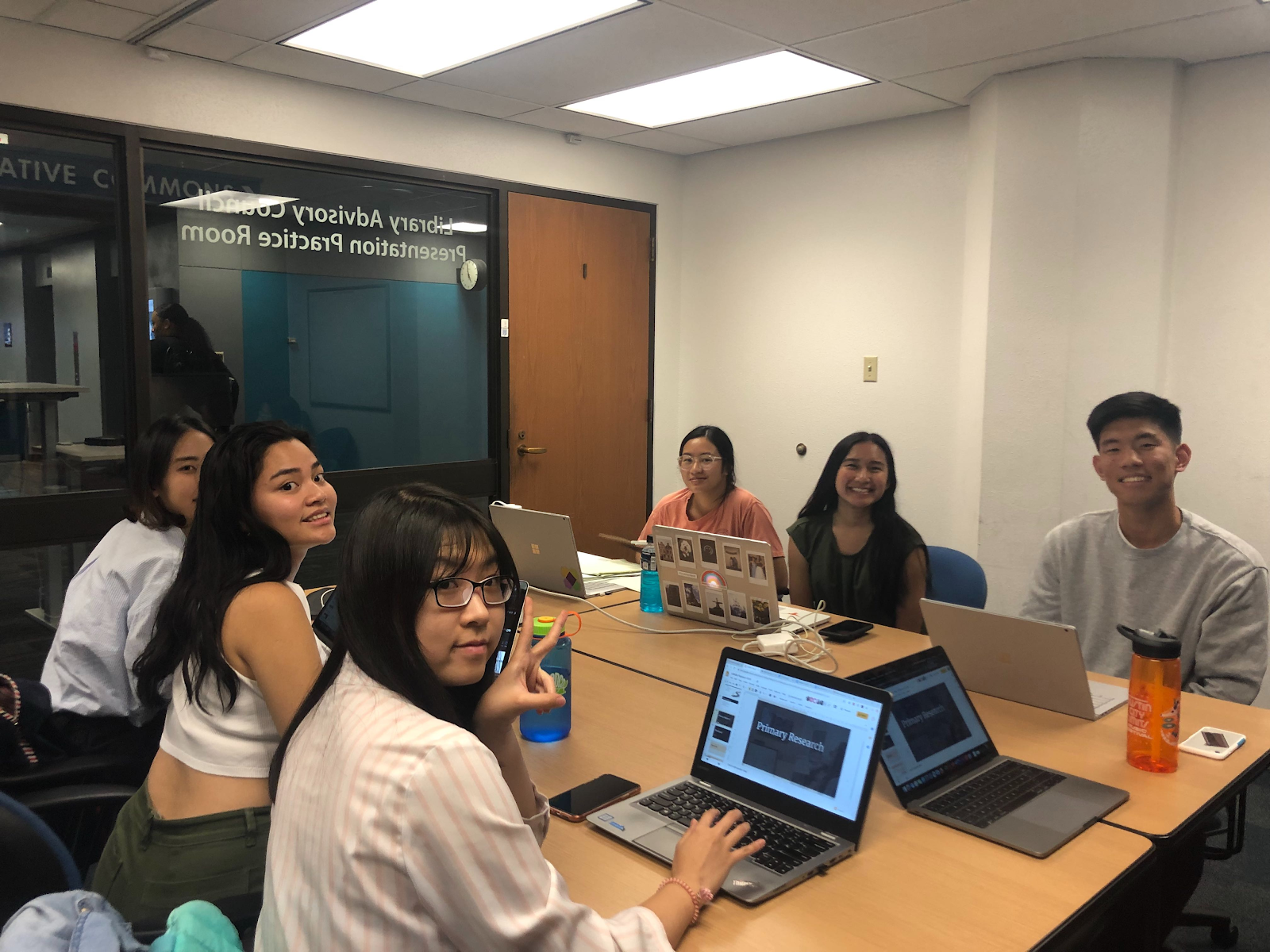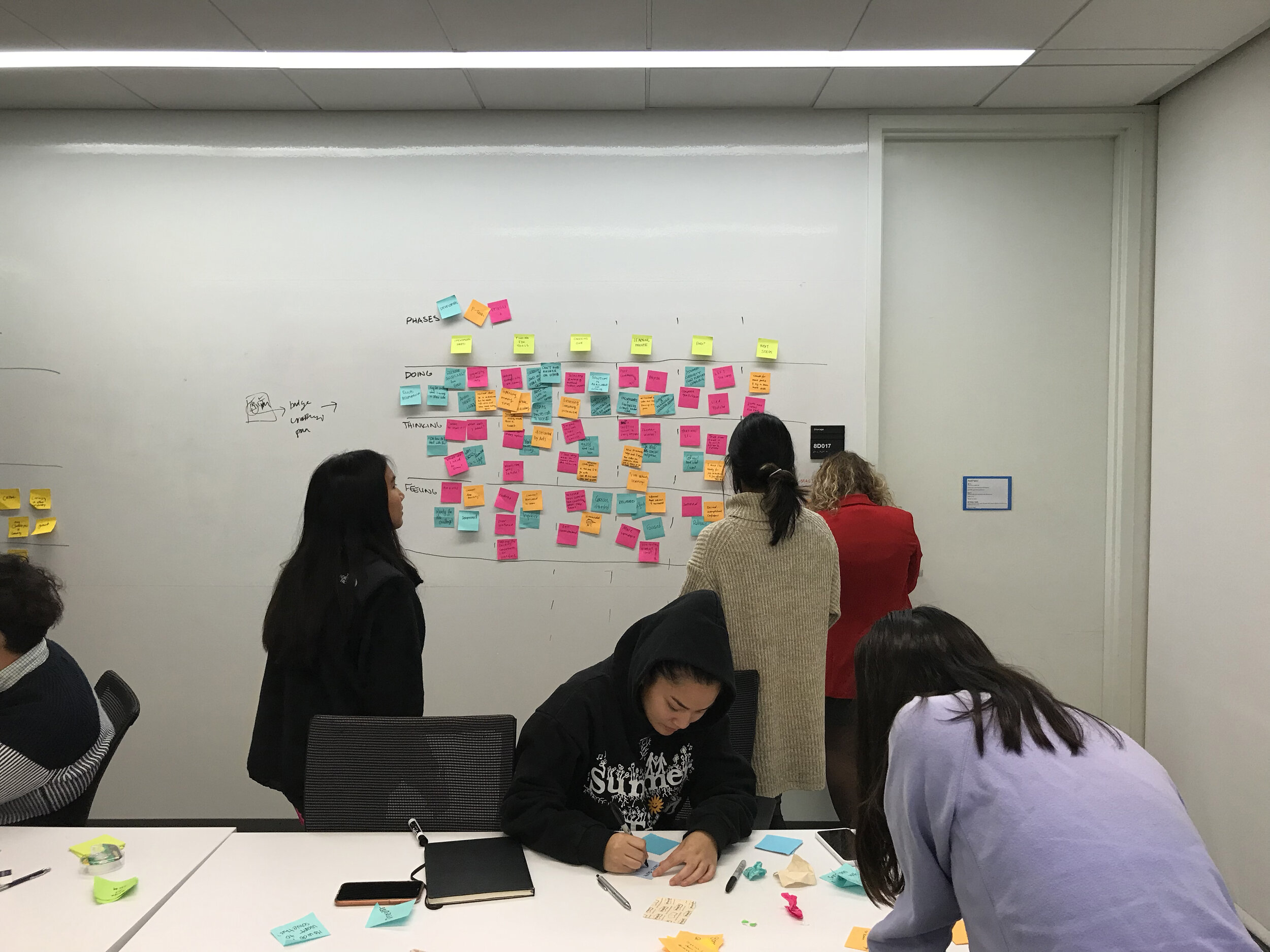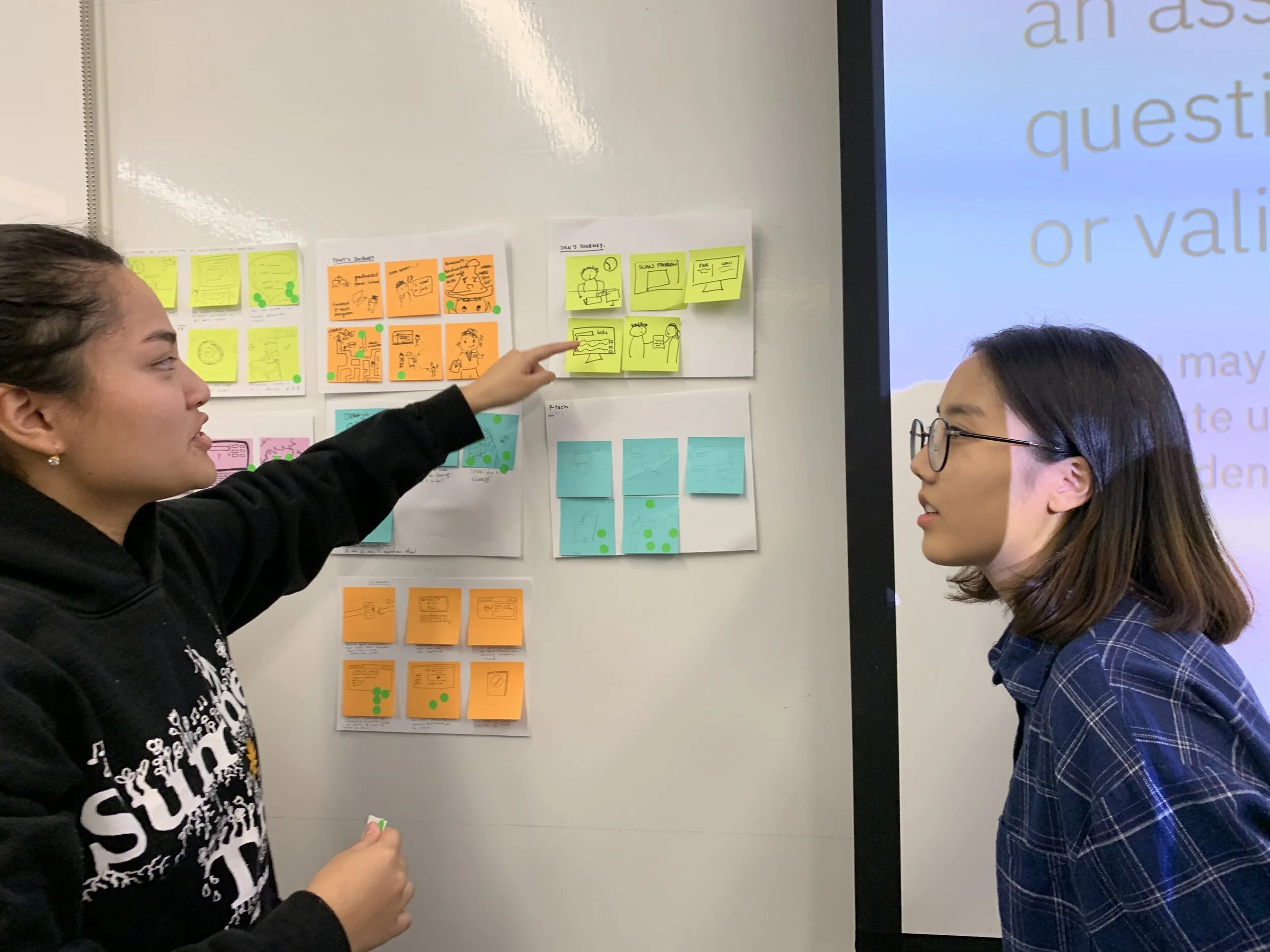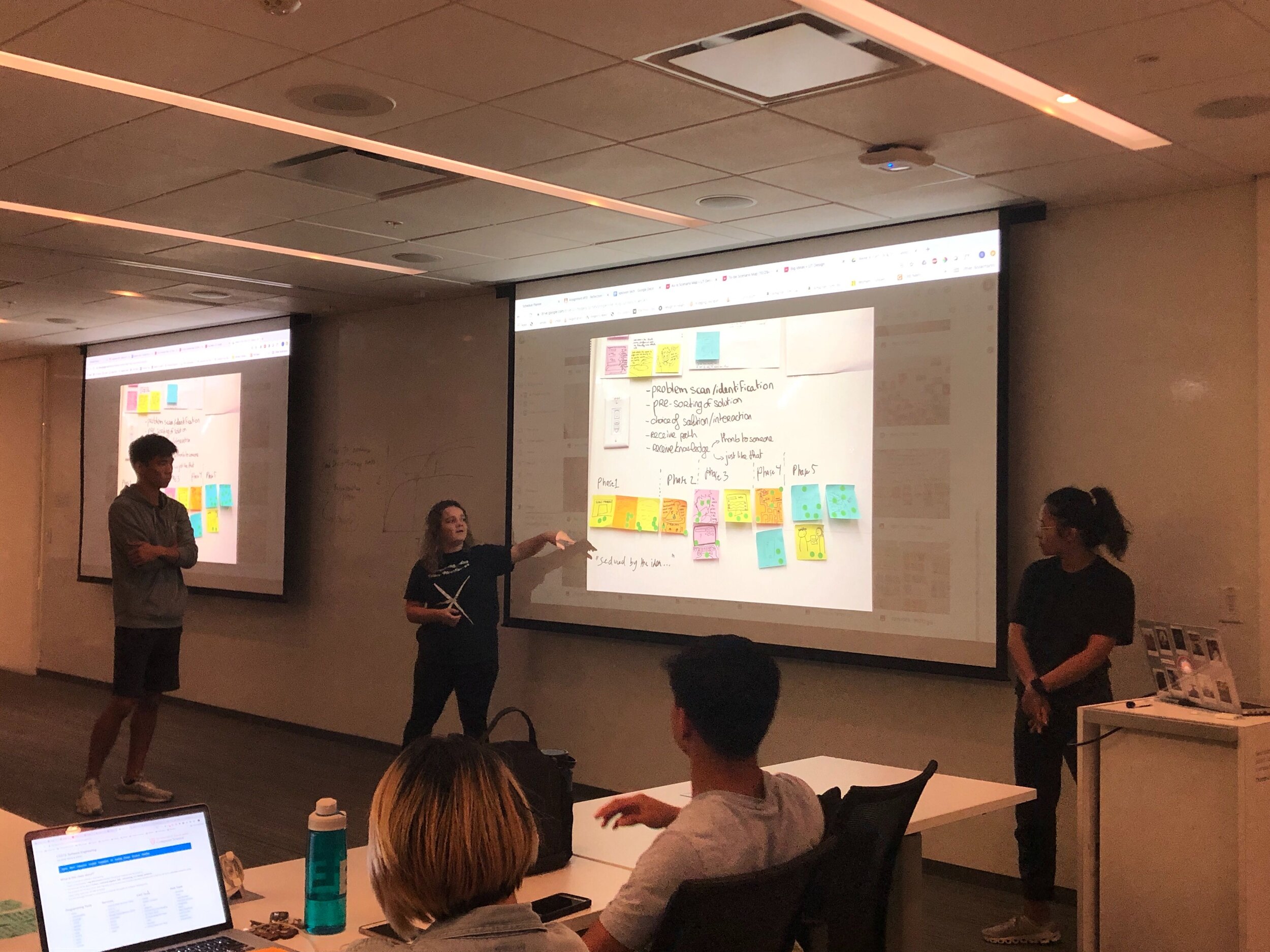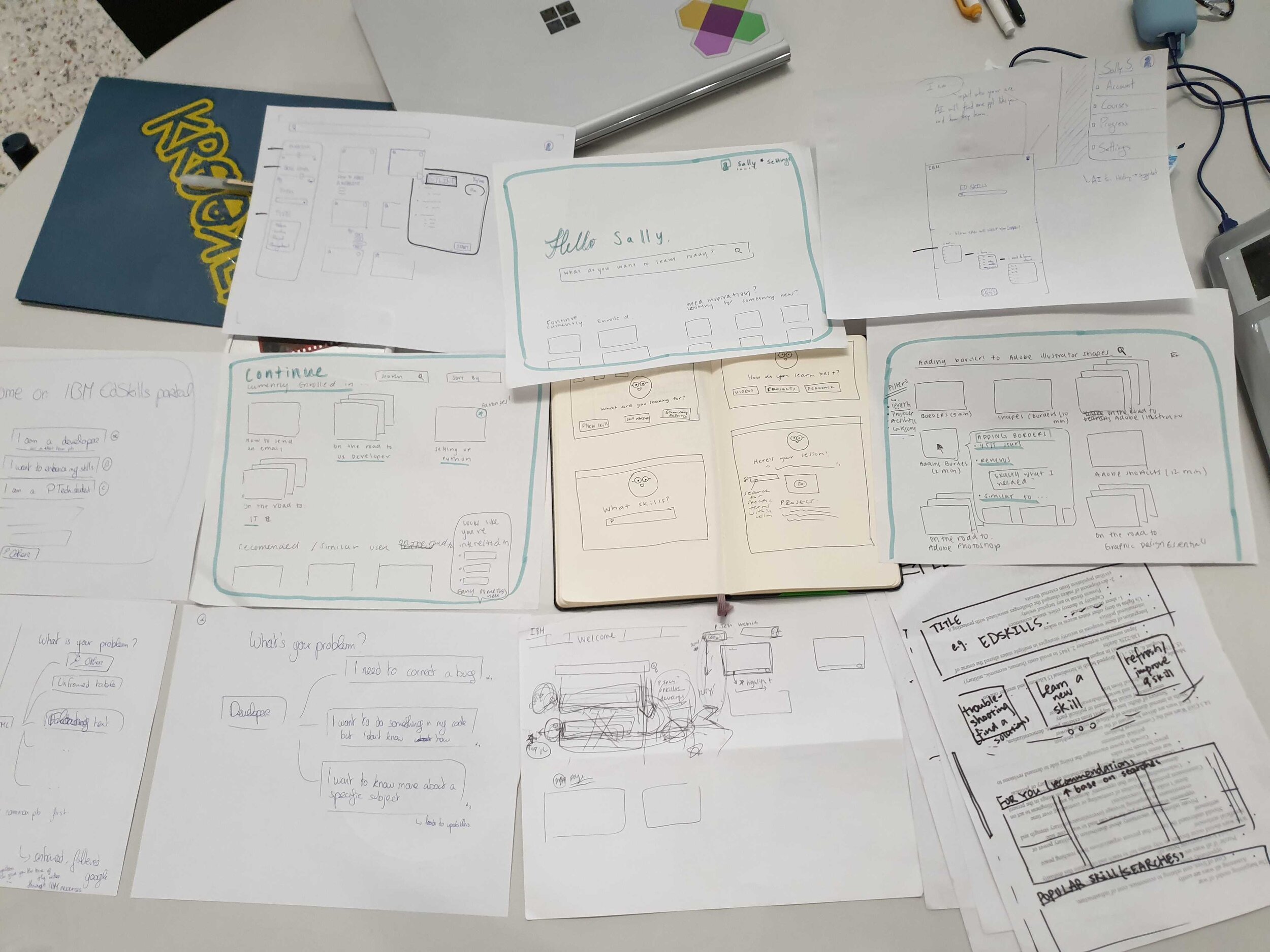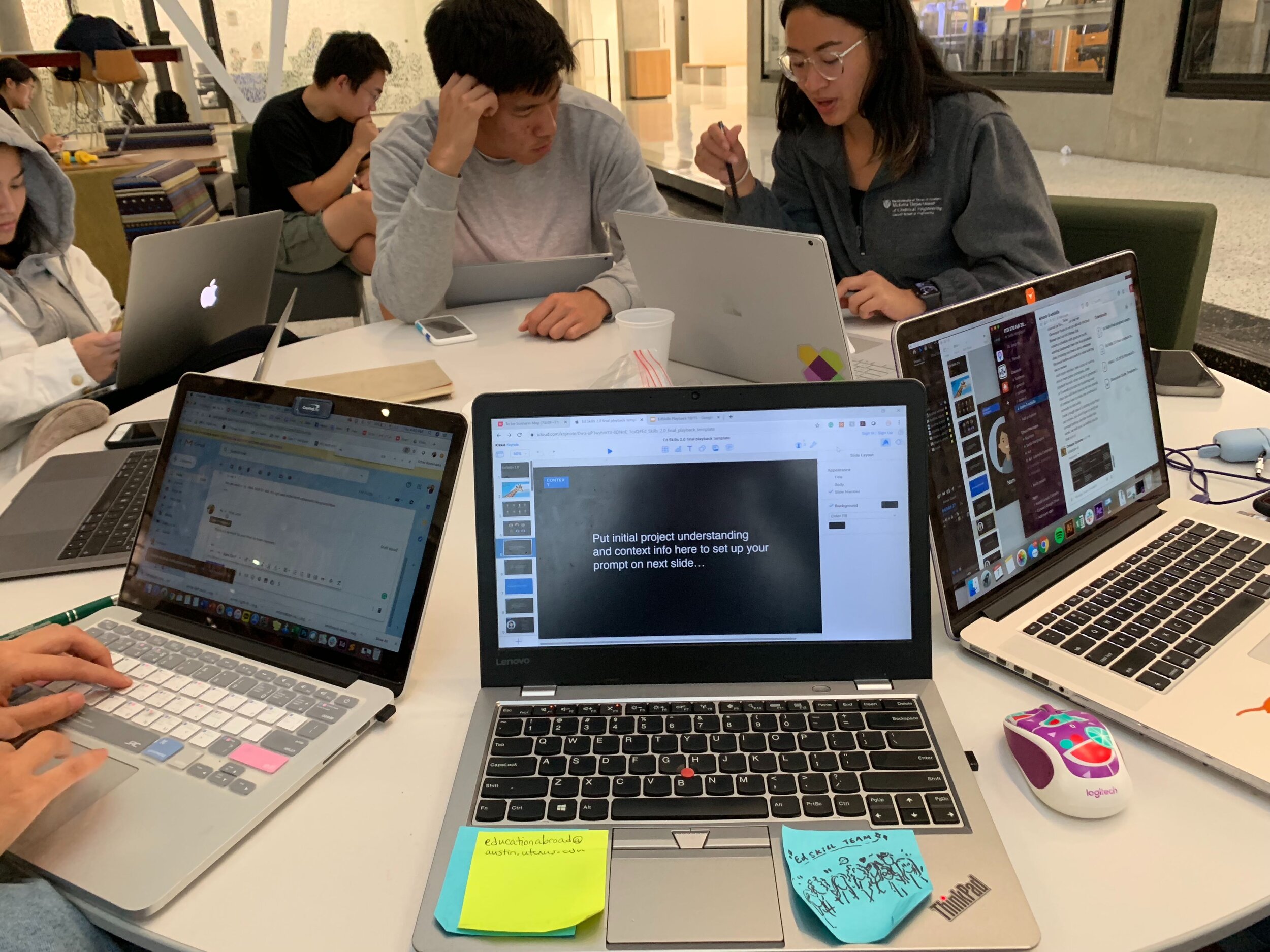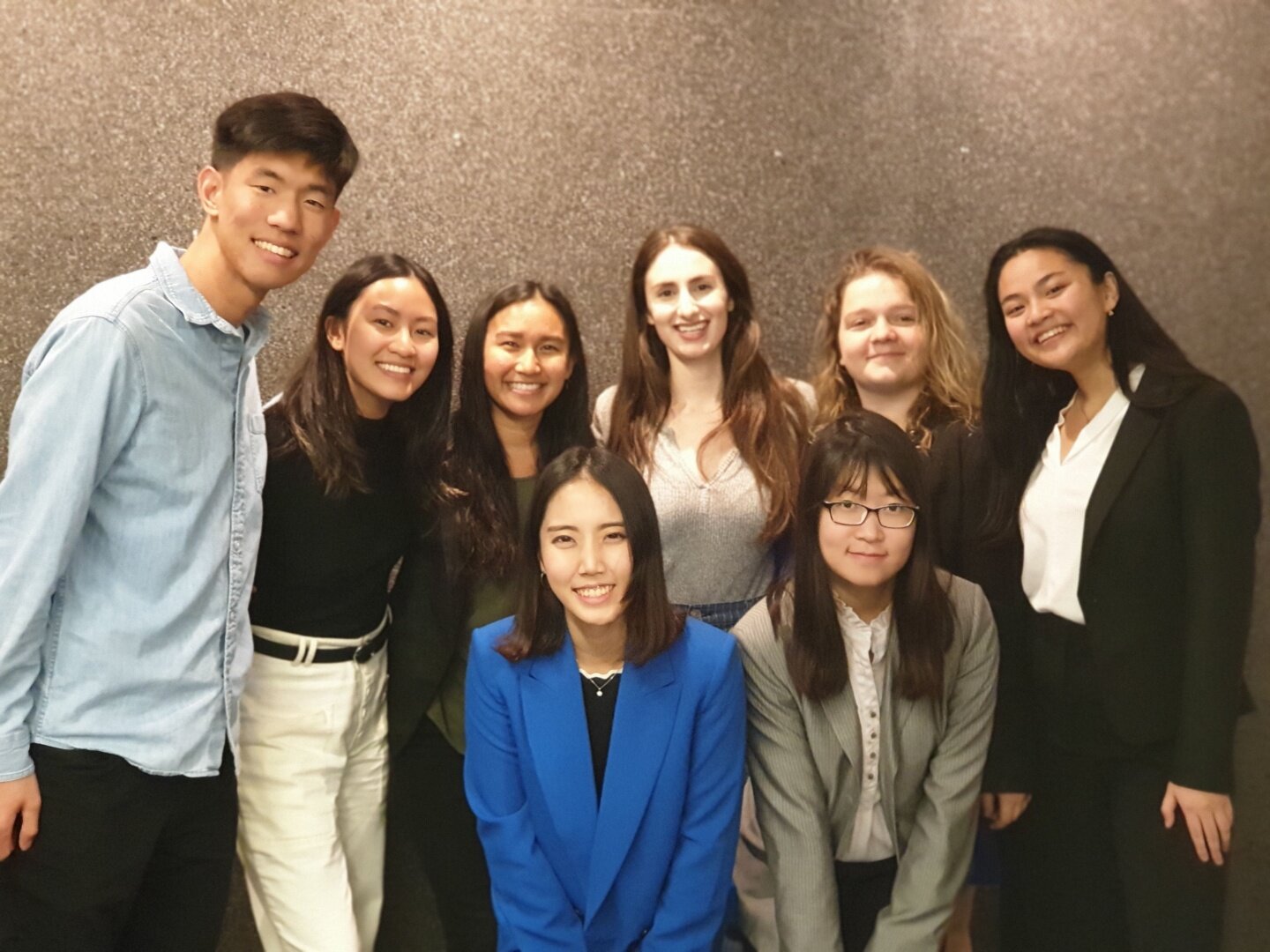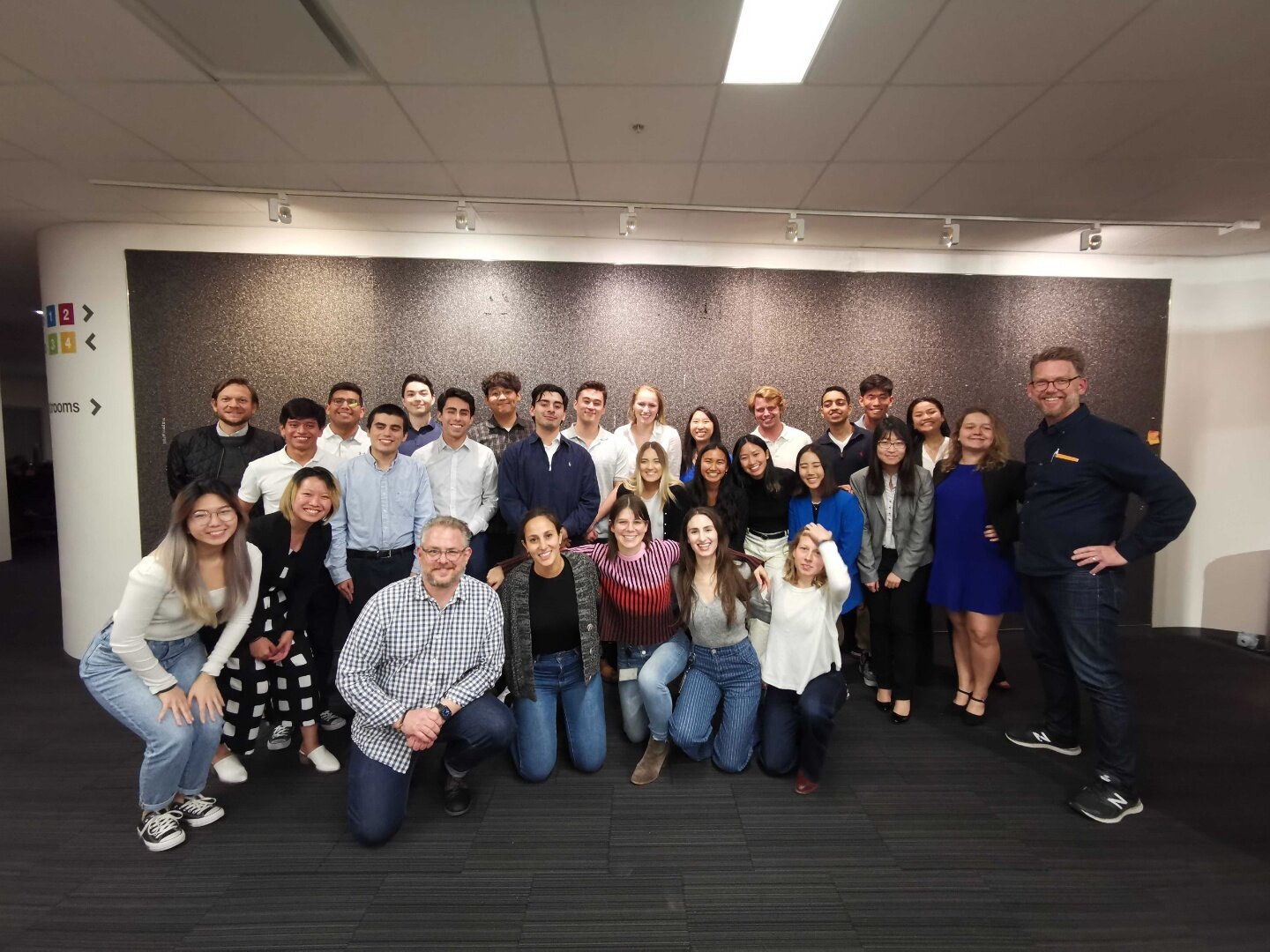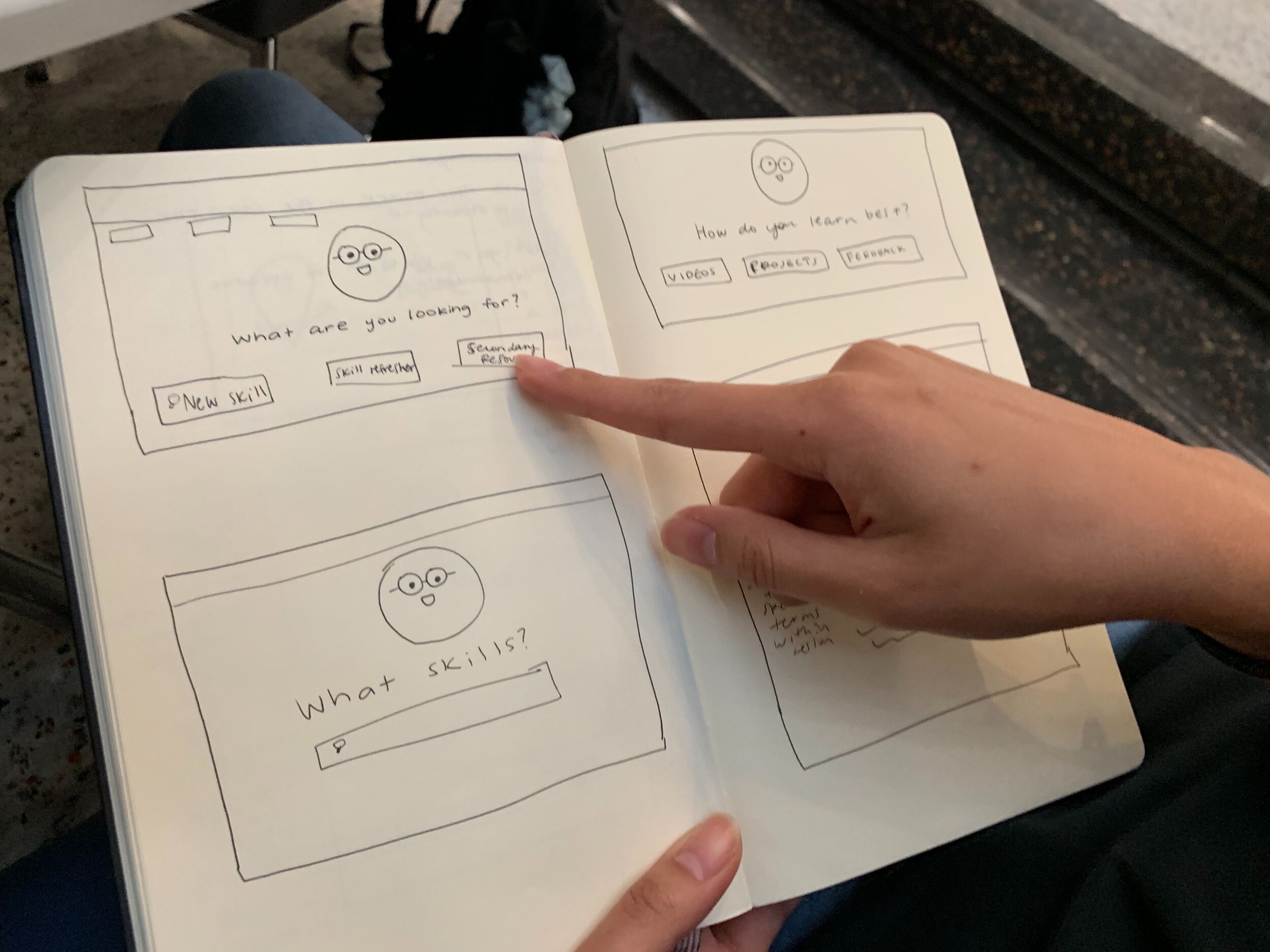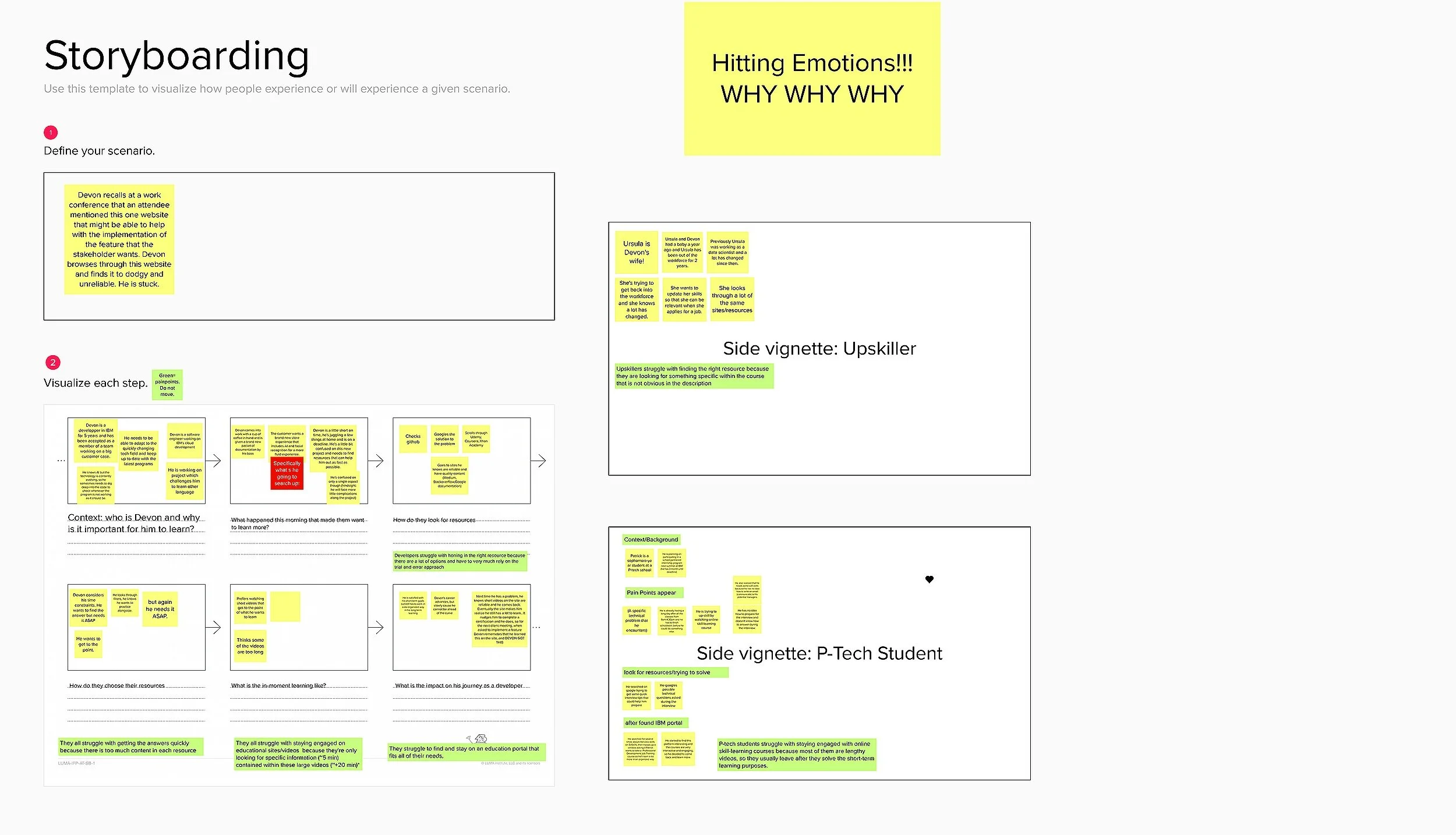IBM ED skills 2.0
Under mentorship of IBM designers and engineers, our cross-disciplinary teams applied human-centered design approach and the principles of IBM Design Thinking to real problems.
Collaborators: Art Tuazon (Chemical Engineering), Makito Nakagawa (Human Ecology), Orhiane Savarese (Business), Sarita Hangtagool (Arts/Entertainment Technologies), Shania Safira (Mechanical Engineering), Doris Tang (Design BFA)
Mentor: Gabi Campagna, (Product Design Lead & Researcher, Computer Vision at IBM) and Brooks Protzmann, (Design Program Director at IBM)
My Role: UX Researcher
Delivered: Primary research, secondary research, user interview, concept development, user journeys, user testing, prototypes, team management
Term: Fall 2019 (3 months)
Problem Statement
Problem: IBM has numerous online educational resources that can help you learn so many things. Some resources are only for IBM employees while others are also available to external partners. But the problem is, all of these resources live in their own platform. There is no current overarching brand that connects and makes it easy for non-IBMers to find the program that’s right for them.
When we were tasked with this problem, we asked ourselves…..
How might we create a cohesive & simple portal for users of online learning resources that produces tangible and measurable outcomes as a means to encourage users’ lifelong education journeys?
Stakeholder Map
So when we began our research, our stakeholders identified 12 unique personas, but due to time restrictions, our project focuses on 3 primary users: Developers, Up-skillers, and P-tech students. We also decided on these because they’re interchangeable as upskiller can be interested in moving into a developer role. P-tech student can be interested in being a developer. This makes it more cohesive for our research process.
Research
We split into pairs of 2-3 for the core user groups, and created discussion guide including interview and practiced. My partner, Doris and I interviewed P-tech team with our discussion guide.
Overall, We conducted a total of 12 sponsor user and stakeholder interviews with 4 of each core user group, Developers, Up-Skillers, and P-tech students.
Pain points from our interviews
1. All users struggle with staying engaged on educational resources because they are only looking for specific information contained within large amounts of documentation.
2. All users struggle with getting the answers quickly because there are too many resources.
3. All users struggle to find and stay on an educational resource that fits all of their needs.
DEVELOPER specific need: Struggling to find a single reliable and central source of truth for project specific work.
UP-SKILLER specific need: Struggling with a plethora of learning options in a domain where they don’t have enough expertise to know what’s best.
P-TECH PAIN specific need: Struggling to find engaging and interactive modules that add to their in-school learning and help direct a specific career path.
Main Quotes from interviewees
“When looking for answers online, it is lots of trial and error.”
“The easier the ability for you to find answers, the better you are at solving the task at hand.”
“When you’re undecided you can’t really make strides towards your career path because you don’t know what you need.”
Based on this research, we were able to make three personas.
Synthesizing Insights
All three user groups use online platform resources to fulfill short term goals.
All three user groups show interest in long-term learning, without necessarily a plan to achieve it.
All three user groups value the learning experience more than badges or certificates.
Up-skillers and developers are looking for short, straight-to-the-point lessons and will cut the lessons short once they have what they need.
P-tech students look for interactive experiences that keep them engaged during their learning process so they can eventually achieve their long-term education goals.
Our point of view as a team is that by using in-the-moment needs as suggestion criteria for long-term learning credentials and badges, the IBM EdSkills portal can turn trouble-shooters into life-long learners in a way that increases the value and relevance of the badge being earned.
Our research told us
the majority of online education users are trouble shooting, not badging
Users don’t value badges or credentials if they don't see a clear value proposition (making me better at my job, getting a job, getting paid more, being more efficient, eminence etc.)
AS-IS Scenario (Without our solution)
*Blue: Developer, Pink: P-tech students, Orange: Up-skillers
TO-BE Scenario (With our solution)
Storyboarding
Meet Devon, an experience Javascript Developer and get a peek into the lives of his wife, upskiller Ursula, and his mentee, p-tech student, Patrick.
Prototyping
The paper prototype allowed us to quickly visualize and test various ideas. we individually made our own prototypes based on our users’ needs and presented our ideas to each other. We combined our ideas and sketched.
User needs
Find information quickly to complete projects
Have a consistent educational platform that builds on previous work
Be on top of of latest software or trends in industry of interest
User Feedback and Refinement
“The platform does a great job providing the users with what they need. The outline option is amazing. Great transparency for each resource”
“I need [the video content] more streamlined and high level. I like to see the entire picture before going into the details.”
“I was surprised that they [P-tech students] actually like the little guiding character because they want something homey and welcoming when they get on the website.”
Final Stakeholder Presentation
